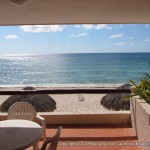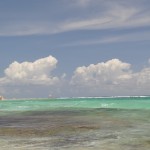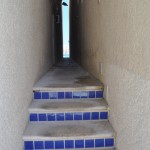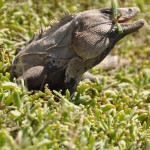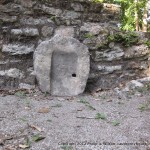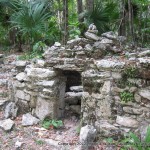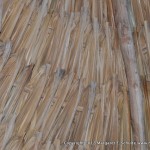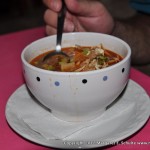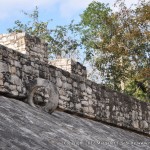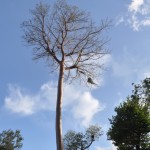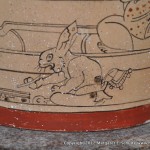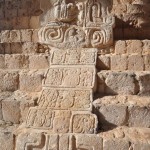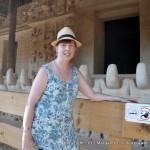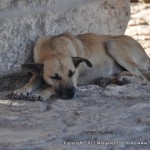I know that it’s still only May,
But a tropical storm’s on her way.
For the engine to fail
On the eve of a gale
Would indicate, this ain’t my day.
Old Friend Waterway

It is always delightful to get back together with an old friend you haven’t seen in a while. This time, I didn’t realize quite how good a friend it was before I got back together.
We have traveled the ICW four times before on Flutterby, and once before on Cayenne. Each trip has been a different section or sections, and this time it is one we’ve traveled before. I first wrote this while traveling South this spring, and forgot about the draft until now while we’re heading back North again. The waterway is still the same old friend, and my stories and memories still apply, so as we’re crossing back into Georgia today, I’m finishing this story off.
An old friend is often just as you remember him–Every time we have been on the waterway we have seen dolphins surfacing and breathing. Sometimes we hear them before we see them. Sometimes they are just traveling through, perhaps in the same direction we are going, or perhaps in another direction. One time one followed us for over an hour, surfacing right next to the cockpit about every minute, on the port side for a while, then on the starboard side for a while.
Other times the dolphins are feeding, and they don’t move in a straight line, they are more vigorous and stay in the same area. Often pelicans are fishing in the same place as the dolphins. I love watching them dive. They will hang or circle for a bit around 20 feet up in the air, then dive straight down into the water with a huge splash. When I was anchored nearby, the splash was loud enough that I looked up to make sure nobody had just fallen off a boat. The other thing I’ve noticed is that when they dive in this way, their head goes under the water, but their body won’t go under, and they spin around 180 degrees by their neck, and come up facing the other direction. Where are the pelican chiropractors?
But sometimes you learn a little bit new about an old friend. I’ve watched pelicans doing their big dives many times, but recently I’ve seen them doing little dives where they fly near the water and land dipping their head in without the huge splash and 180 degree turn. However they dive in, they still spend quite a while with their beak in the water and their neck full of water and (hopefully) fish, and slowly filtering the water out so they can spin the fish around so the scales are in the direction that is easy to swallow.
My friend the waterway also goes through seasons. Twice we have been moving North during summer. Once we were moving North during winter. Once we were moving South in the winter. Going South this March it was still winter when we left North Carolina at the start of the trip. We went South, and closer to the sun, and the sun was moving North and closer to us. I wrote to somebody that we crossed into spring somewhere in South Carolina. As we made the Gerogia/Florida border, we were getting into summer already. I think I managed to get through the tree pollen season in less than a week this year.
One seasonal thing about the waterway is the cruisers. Three times we were moving with the general marine snowbird migration, and got to interact with the rest of the flock. When we purchased Flutterby, we were going North and everybody else was going the other way, and often told us we were going the wrong way. This spring, the waterway was empty when we started. As we got into Georgia we started seeing more cruisers…and once again, they are mostly going the other direction.
Sometimes your friend will have a small subtle change…many people could miss it but perhaps you notice. The waterway wears thousands of aids to navigation. A few of them are buoys, but most of them are signs on pilings. They don’t change much. Perhaps a third of them are lighted and those are slowly shifting. They used to be a large red or green gumdrop with an incandescent light bulb inside. When the sun is low, if you caught them just right, they would glow as if they were turned on when the lens caught the sun. But to keep this lighted, there is also a medium solar panel mounted at a 45 degree angle facing South, and a battery about the size of a car battery. They keep the coast guard busy servicing them because the bulbs burn out eventually, and the batteries need to be replaced every few years. Lately I’ve seen something new. It is a little bigger than the gumdrop, but shaped like a square Japanese lantern. All four vertical sides have solar panels, and it might have a battery inside, or perhaps instead a big capacitor bank. At the top is a LED light. I’ve converted Flutterby’s navigation lights to LEDs, so I appreciate the same benefits, smaller, lower power usage, and reason to hope it will work for decades without maintenance.
One of the more embarrassing things about my old friend waterway is that I’m getting accustomed to its flaws and learning how to deal with them. In this case, it is all the shallow water. I have to admit that we managed to touch the bottom once each of the first few days this trip. I don’t want to go back through the days and try to count them all now. The first one was in a known shallow anchorage that we decided to go into at low tide anyway. A couple others were as we were getting into or out of anchorages. Some were when we drove out of the channel. I remember one that was in the channel too.
But something is new this year. Not one of them was difficult to get underway from again. My new (but embarrassing) technique is to motor with the centerboard all the way down, so we draw six feet. We’re generally going slowly when we run aground, and stop easily. At this point I make sure we know where we want to go, probing the bottom around the boat with a boat pole if needed. Then, knowing which direction to go, we throttle up and crank the centerboard up until we are free. Since we draw about four feet with the board up, this has worked each time. Then once we are moving well, I let the board back down, for next time. I still don’t know how we managed to go all the way from Vero Beach back to Beaufort, North Carolina in summer of 2011 without a single grounding.

And then there are the familiar waters and landmarks we pass by each time. For some reason, we always take a picture of that big pink house in North Carolina that’s on its own island with palm trees and tropical stuff painted on it. This time, I turned to Margaret and said, “I don’t know who lives there, but I wish I did.” We went by Hilton Head Island, where we purchased Flutterby, and Calabogue Sound, where we did our test sail. We even went back through the stretch of waterway where we actually sailed with the original rig, and the anchorage where we raised those sails for pictures.
I wonder what new things my old friend will show me as we go back North again?
He’s got my number
A mysterious text message showed up on my cellphone yesterday:
There once was a gal named Meps
Who passed the awesomeness test
She has a birthday
And all I can say
May it be one of the best!
I have a “dumbphone” with no keyboard, but I laboriously typed this response:
Hey, your limerick-writing is slick,
And you thought you would play a fun trick.
An anonymous rhyme,
To my cell phone, this time:
But I figured it out: It was NICK!
He won’t be able to fool me again. I saved his number in my list of contacts under “Limerick Nick.”
I Am Worthy

The rounded bricks that made up the ancient street were so treacherous that I had to pick my way extra carefully, with my head down. I didn’t even see the building until it was right in front of me.
Suddenly, there it was — sky-blue stucco, navy-blue shutters, and black decorative ironwork over the doors and windows. It was so familiar, a building I’d seen hundreds of times, but only in photographs and videos.
When I craned my neck to take in all five stories, I got goosebumps.
Almost ten years ago, Barry and I loaned the money to buy this property to a tiny non-profit. At the time, it was a derelict, and we didn’t know what it would take to renovate it. We had no idea when, or if, we would be paid back. We had no idea when we’d even see the building, located in Salvador da Bahia, Brazil.
Now we had come to do something more than just see it. We had come to use the building for its intended purpose: To exchange knowledge and build community.
We were part of a group who had come from all over the USA at the invitation of Rita Conceição to help launch a new endeavor: Sou Digna. The phrase is translated as, “I Am Worthy,” which pretty much sums it up. Sou Digna’s programs give impoverished women the confidence and skills they need to achieve equality.

So, when we stepped through the door and into the building, we did so as participants, not visitors. For two weeks, we threw ourselves into a whirlwind of activity that included fixing broken furniture, painting, cleaning, and making the classrooms fresh and inviting. We sat together, creating budgets and planning documents and promotional materials. We participated in discussions every day about living with the violence created by endemic poverty.
For one week, my friend and colleague Nancy Bacon taught a class in organizational development and grantwriting, and I served as a class assistant, documenting the class and learning along with the other students. Then it was my turn to teach them how to use technology to build their international community.
At that point, I really wished I was on the painting and refurbishing crew. As I wrote to a friend at home, “Frankly, I am terrified, even though I know all my students.” As a corporate trainer, I had presented to much larger groups — 200 people, not 10. But I never had to present this much critical material, working with an interpreter. Would I have too much material? Would I have too little? Would I be able to meet their expectations?
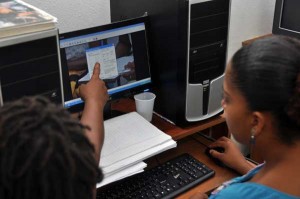
In the end, the class went great. The students were excited to realize that they could develop their own messages, using tools that are not intimidating. They did class projects that provided them with useful materials they’ll be able to use, not just abstract assignments. They had several days of hands-on work with computers, and it was fascinating to see the range of computer skills in the room and the joy they experienced when they succeeded in doing something new.
At the end, the biggest complaint in the class evaluations is that they wanted a longer class. Whew!
It has been a few months since the class, and now that I see the work my students are doing, I am awed. They came to class and learned a lot more than new computer skills. They learned that they have things to share with the world that the world wants to hear. They learned that they have a right to speak and be heard by the world. They learned that they are worthy.
In the months since I’ve returned from Brazil, members from this dedicated group of women have launched several initiatives. One is a course in cooking and food preparation that will help women find jobs and start small businesses. Another is a technology class that incorporates basic computer skills with some of the material I shared. And every student in the Sou Digna program learns about human and legal rights, those basic rights that each of us needs to understand to know that yes, I Am Worthy.
Every time I see a photo of the activities, I recognize where it was taken, in that building. I am proud of myself for being part of the genesis of that building, for having a little plaque on the wall with my name on it. But in the end, it’s just a structure. The real pride is in the students who study and learn and grow in that building. The real pride is knowing that I have contributed to the well-being and happiness of my Sou Digna community. There are no plaques for that, but I don’t need one. I carry it around with me all the time.
===
For more information about Sou Digna, visit our website or “like” our Facebook page. As a friend of mine, you are already part of our community, but please consider making it official by signing up for updates! If you’d like to help us financially, mark your calendar for May 2nd, 2012, when the Give Big campaign gives you a chance to donate with up to 15% matching. It’s like finding free money to give away.
Nancy Bacon has also written an excellent blog post about our students.




Images from Mexico
On mepsnbarry.com, I have published a gallery of the best photos from my recent trip to the Yucutan Peninsula to see the Mayan ruins. I hope you enjoy the beautiful Caribbean sunshine and mysterious ruins in the jungle.
All photos are copyrighted, but feel free to send me an email if you’d like to reuse one.

Sleeping policeman
On the side of the road, up ahead, I saw a small sign on the ground that said, “Elotes.” I was wracking my brain, trying to remember what that word meant, when I noticed what was above it.

A black-and-white road sign with a symbol on it, looking like a snake that ate two donuts. Tope!
“WATCH OUT!” I cried in alarm, from the passenger seat. My driver and companion, Philip, slammed on the brakes and eased the tiny rental car (he called it “the pregnant rollerskate”) slowly over the nearly-invisible, transmission-eating bump.
“Whew. Thanks,” he said, as he shifted back up to speed.
The sudden stop was re-enacted over and over during our recent trip to see the Mayan ruins of Mexico. “Topes,” or speed bumps, are a fascinating part of the Mexican driving experience. Completely disruptive to comfortable car travel, we found them all over the highways of Quintana Roo. According to expat writer Stan Gotlieb, Mexican slang for them is “policia durmiendo,” or sleeping policemen.
There’s no consistency to the character of the topes. Some are wide plateaus, some are rounded bumps, some are big pieces of rope that jar your teeth. The signage, too, is inconsistent. Some are marked 300 meters in advance. Some are painted yellow. Some are not marked at all, just waiting for you to fly over at full speed and land in the arms of the local mechanic. We saw almost no stoplights in Mexico, but hundreds of topes.
Clever entrepreneurs use their village topes to offer fruits, vegetables, and baked goods to the drivers who are forced to nearly stop to make it safely over the deadly bumps. Some have even erected permanent shops and stands next to the topes, including one where we bought a pineapple. Is it possible that the shopkeepers erect the bumps, or at least lobby for them, as a way to get business?
After we’d made it over the “Elotes” speed bump and into the village, I asked Philip to make a u-turn. He cruised back and parked in front of the bump. I had finally remembered what “elotes” meant: Corn.

The young woman at the stand took my money and pulled two ears of corn out of a large pot, steaming over a wood fire. She squeezed lime juice over each ear, then spread it with a thin layer of mayonnaise. This was followed by chili powder and fresh-grated hard cheese, and delivered with a handful of napkins. Many years ago, I had read about this way to serve corn in a Molly Katzen cookbook, but I never thought I’d get to try the real thing, on the Tulum-Coba road.
As she quietly prepared the corn, I found myself wondering if she and her family had erected the speed bump, and what she thought about working every day, selling corn and vegetables next to a speed bump. I wished my Spanish was good enough to have a conversation with her.
The corn was delicious, and I used my clumsy Spanish to thank the young woman. “Gracias,” I said. To which she replied, in completely unaccented English, “You’re very welcome.” I was too surprised to reply.
—


Jipijapa
Up ahead in the road, what is that?
And we swerve so it won’t go “kersplat.”
Then we stop. I run back,
Find it’s just what I lack,
It’s a perfect-fit Panama hat!
On my recent trip to Quintana Roo, Mexico, I didn’t buy myself a single souvenir. I did, however, bring back the cutest Panama hat you ever did see! With the help of my friend and driver, Philip, I rescued it from the middle of the freeway and have been wearing it ever since.
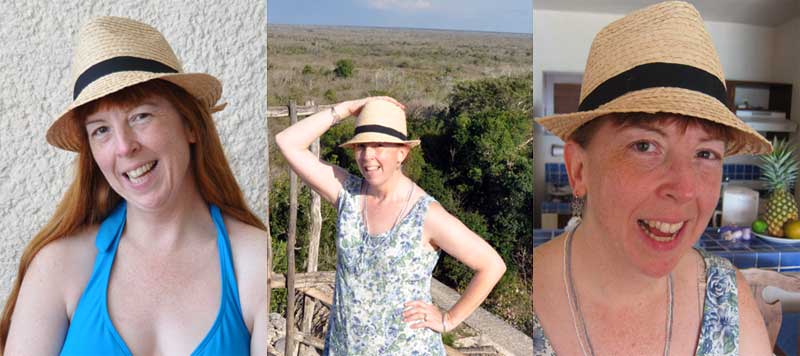
According to my Spanish dictionary, “jipijapa” is finely woven straw, and the term for Panama hat is “sombrero de jipijapa.” Sadly, the tag in my sombrero de jipijapa says, “Made in China.”
Wedding guest
The first time they tried to get us to row ashore, it was too windy. Flutterby was humping and seeking in the howling winds leftover from a major storm system that had wrecked havoc and tornadoes across the south. Barry went up on deck to check on the situation, and to my surprise, I heard him talking to someone.
He came back down, shaking his head. “A nice lady on the dock invited us over for a glass of wine,” he said.
“Wow. It looks so close, but it’s a million miles away, isn’t it?” I replied.
We were barely 100 feet from a private dock in front of a condo building, but it would have been impossible to launch the dinghy in those winds without damaging it, Flutterby, or a member of the crew.
The next day, the winds calmed a little, and we were able to row ashore for a new GPS. We used the dinghy dock at the marina, further up the creek, which meant a more difficult row against a 2-knot current. It was a grumpy day, because we spent way too much money (for you landlubbers, a “boat buck”=$1K) at West Marine.
When we got back to Flutterby that evening, we wearily hauled the dinghy up on deck and tied it down. My mind was set on an early bedtime and a pre-dawn departure.
On the dock, a man called to get my attention. “Would you like to come over for a glass of wine?” he shouted.
If only he’d called out 10 minutes earlier, before we got the dinghy out of the water, I might have said yes. But I shook my head. “No thank you,” I answered.
He persisted, having noticed our home port. “Our daughter lives in Seattle.”
“Where?”
“On Capitol Hill.”
We conducted a surprising but difficult conversation over the wind. His daughter lives very close to the house we owned for 10 years.
“I’m not originally from Seattle!” I shouted. I told him that my parents had built a house on an island just up the road from here, Harbor Island.
“What’s your Dad’s name?” he asked.
“Schulte!”
He threw his head back, laughing. “I WAS AT YOUR WEDDING!”
I peered closely at the white-haired gentleman on the dock, who I hadn’t seen in 20 years. Then I stuck my head down the companionway. “Barry! We have to launch the dinghy again! That’s Tom Mikell on the dock!”
We launched the dinghy and rowed the short distance. Tom was waiting for us with a glass of wine in a condo on the ground floor, Flutterby perfectly framed in the french doors of the living room.
The three of us sat down and started getting caught up. “Wait ’til my wife comes back from yoga. She’s going to be amazed. She was disappointed when you wouldn’t come over yesterday.”

Mary Ann came back a little while later, and Tom met her at the door. “We have guests, honey. Remember those folks on the sailboat?”
“Great! You got them to come over!” She greeted us with a big smile and a hug, and Tom teased her about his ability to lure us over when she could not. Then he burst out, “Guess who was at their wedding!” She shook her head, “Who?”
Tom pointed to himself.
All three of us grinned at her. She stared at us in disbelief, then checked the wine bottle. “What have you been drinking?”
“It was twenty years ago,” I chimed in.
With all three of us talking at once, we explained the strange coincidence, the fact that Tom had known my parents very well, that we had gotten married at my parents’ house in a memorable and unusual ceremony. “Do you remember that there was a sailboat on top of the cake?” I said to Tom. Back then, we owned a 14-foot daysailer and dreamed of someday cruising on a “big” boat.
Tom and Mary Ann have been married for just about a year, and they are a wonderfully-matched couple, excellent story-tellers who share a lively sense of humor.
“I met your Mom and Dad at a party on Harbor Island,” said Tom. He’s an attorney who represented the Harbor Island Owners’ Association, an organization my Dad practically ran for a while. “When I got there, everybody was drinking and carrying on, and your Mom had this party game, where she was studying peoples’ handwriting.”
I cracked up laughing. Mom’s ability and belief in handwriting analysis were legendary in my family. Any time my siblings or I brought home a new boy- or girlfriend, Mom demanded a sample of their handwriting to analyze and make sure they were a good person. Barry evaded her scrutiny only because handwriting analysis requires cursive writing, and he prints everything.
“So your Mom studies this sample of my handwriting,” continued Tom, “and with everybody at the party watching, she looks at me and says, ‘Hmm, dishonest…’ and everyone at the party starts laughing their heads off! ‘See these loops here, and the way the i’s are dotted…dishonest, very dishonest. Must be a lawyer.’ I must admit, I was not pleased,” said Tom. He scowled playfully.
Luckily, Tom laughs about it now. He forgave my mother and enjoyed many good times with both my parents. He described a time when Harbor Island was a tight-knit community of young, vibrant retirees who hung out together on the beach, went boating, and had a lot of parties.
“Remember the whale?” he said.
That’s another legendary story — in 1987, a 65-foot whale beached herself on Harbor Island, which folks in Beaufort call “an overgrown sandbar.” My family was walking on the beach that afternoon and was the first to come across the giant creature, who was euthanized after a couple of days. Then there was the problem of what to do with a rotting 65-foot whale — one of Tom’s more interesting legal cases.
A group of experts cut the whale up into pieces with chainsaws, and the island owners hired a man with a bulldozer to bury them. But Mother Nature had other ideas, and a couple of weeks later, the rotting pieces started popping up out of the sand.
“I guess they just buried it deeper,” said Tom. “No, I heard they put concrete on top,” I said. Neither of us had heard of rotting whale pieces on Harbor Island after that.
We spent the entire evening with Tom and Mary Ann, talking about everything under the sun. We even walked over the Upper Crust for some dinner — my Mom’s favorite pizza place when she was alive. Once in a while, one of the four of us would shake our heads and marvel at the coincidence and history that brought us together. “You look like your Dad,” said Tom, a very high compliment indeed.
One reason our wedding was memorable was because it was all about magic and sailing. It was magic and sailing that brought us together with Tom and Mary Ann for the evening — but I can’t believe it took 20 years. Now that we know where to find them, we’ll be back a lot sooner to anchor in Factory Creek and row ashore for a visit.
Barry does the laundry
He was late getting back to the boat,
With the clothing he needed to tote,
And a smile on his face,
For he’d found, in that place,
That it’s great fun to feed a small goat.
Here’s a picture of Barry feeding 4-day old Lucky, the tiny goat who was living in the laundry room at Osprey Marina:

~~~

Marina mascot
“Is there a place to do laundry here?” I asked, as Barry presented his credit card to pay for our night’s stay at Osprey Marina.
“Yes — there’s a laundry room, right over there,” said the woman behind the cash register, Lynn. She pointed out the door of a clean but nondescript room with a row of washers and dryers and a small table. At least, it was nondescript at the time. Later that night, you might say it was pretty “descript.”
We’d stopped at Osprey marina because after four days on the water, anchoring out, it was time for hot showers, diesel, and laundry. A couple of years earlier, in one of the email dispatches known as “Malla and Ted’s Excellent Adventure,” our friend Ted had gone into uncharacteristic rapture over the place, once named the best marina in the country by Marina Dock Age Magazine.
As Ted led us to expect, the place was small, reasonably priced, and very friendly, with excellent facilities for doing a memorable load of laundry.

What made it memorable was that at 5 o’clock, when the office closed, Lynn moved a baby goat into the laundry room.
The morning we arrived, the goat was the only topic of conversation. There was a small herd of them on the 180-acre property, and this one had been born four days earlier, on February 23. At first, everything looked fine, but after three days, his mother died.
Just a few hours before Barry and I arrived, the little orphan was tucked among warm towels in a small cooler and moved into the marina office with the heat cranked up. Everyone who came into the store stopped into the office to coo over the tiny brown-and-white floppy-eared creature who spent his time sleeping, eating, and occasionally bleating in a way that sounded like a human baby.
At the end of the day, there were plenty of volunteers from the various boats to help care for him overnight, which is why he ended up in the laundry room with all his paraphernalia — milk, bottle, printouts from the internet on how to care for an orphaned goat, a feeding schedule, and notes about his care and condition. Plus a sign with his name: Lucky.
While I was cooking dinner, Barry offered to carry our load of laundry ashore and put it into the washer. He didn’t come back, and dinner and I were waiting for him when he finally returned. He admitted that he had gotten into a conversation in the laundry room with a boater named Sharon, who was goat-watching. I couldn’t blame him, because I was dying to go up and play with the goat myself.

Later that evening, as Barry was getting ready for bed, I announced that I needed to use the shoreside facilities. It was a ruse — we have a perfectly good head. I went straight to the laundry room, where a couple was just leaving after feeding the goat. We had a nice chat about — what else? — boats and goats, and then they left me alone to enjoy Lucky’s company. I got him out of the cooler and set him on the floor, where he wobbled on his toothpick legs and promptly piddled on the floor. Lucky was innately “cooler-trained” and would not mess up his bed.
For a four-day old creature, he was very rambunctious and curious. He wanted to explore the laundry room and when I turned him away from hidey-holes where he might get into trouble, he complained. He was an adorable playmate, about the size of a small cat.
We were enjoying each other’s company when Sharon returned and caught me trying to capture the fast-moving little guy with my camera. “Oh, good! I was afraid he’d be alone,” she said. “Here, let me take a picture of both of you.”
I was supposed to be in bed a half hour earlier, but I couldn’t help hanging out and talking with Sharon. It had been over 20 years since I played with a baby goat, and who knew when I’d get my next chance? I happen to really like goats.
The next morning, our alarm went off at 5:20 in order to catch some early favorable current in the Waccamah River. I’d promised Sharon that I would check on Lucky, because that would be between his 3 am and 6 am feedings. But when I entered the laundry room, there was Sharon, sitting in a plastic chair.

“Don’t tell me you stayed here all night,” I said.
“OK, I won’t tell you,” she replied.
“But you did.”
“Yeah, I did. I got some sleep when other people came in to feed him. His bottle’s over there in the sink — go ahead.”
I picked up the bottle and crouched down to the cooler, where Lucky was nosing his head around the towels as if looking for something. I gave him what he was looking for, and he sucked contentedly for a while. I hadn’t fed a goat since we lived on Hill Farm in Portland, Oregon, and it brought back fond memories.
Eventually, Barry came looking for me, intent on getting Flutterby underway, but he, too was captivated by early morning goat-feeding. We finally said our goodbyes and slipped our lines at 7 o’clock, 45 minutes later than planned.
Lucky seems strong and healthy enough to survive, but his future is unknown. Will he be adopted out to a family or local farmer, or just nursed long enough to return to the Osprey herd? Is Lucky even a he, or a little she?

There are a lot of boaters with dogs and cats aboard, and even a few birds. One thing is certain, though, which is that none of the boaters so eager to take their turns with Lucky in the laundry room want to adopt him. He may look adorable and be fun to play with, but already the laundry room is taking on a certain “goaty” odor. He is not a close-quarters pet, and I doubt that Osprey Marina, with its reputation for being one of the top marinas in the USA, wants to jeopardize their highly-prized standings with such an odiferous, albeit adorable, mascot.
Our experience definitely confirms one thing about Osprey: Their reputation for being the friendliest marina around is well-earned. They’ll be good to you, providing excellent facilities and plenty of free snacks. Even if — especially if — you are an orphaned goat.



